Ylivieska 作者: 来源: 发布时间:2021-10-15
一、所属省或是州,具体位置,人口,面积
Ylivieska is a town and municipality of Northern Ostrobothnia region, Finland. It has a population of 15,219 (31 January 2019), and it serves as the administrative centre for Kalajokilaakso and Pyhäjokilaakso, an area with about 90,000 inhabitants. Ylivieska is also the commercial center of the Oulu South region, the southern part of the late Oulu province. The closest cities near Ylivieska are Oulu (130 km or 81 mi), Vaasa (199 km or 124 mi) and Kokkola (79 km or 49 mi), the neighbouring municipalities are Oulainen, Haapavesi, Nivala, Sievi, Kalajoki, Alavieska and Merijärvi. The municipality is unilingually Finnish.
In autumn 2013, Ylivieska conducted a municipal survey with the municipality of Alavieska and the cities of Haapavesi and Oulainen. If implemented, the area would form a city of more than 30,000 inhabitants. Other municipalities and cities in the area were also asked to participate in the initiated municipal survey. In the past, when the provinces were not the official levels of government, the province of Central Ostrobothnia often included the southwestern part of the province of Northern Ostrobothnia formed by the Kalajoki Valley. At that time, Ylivieska was one of the most important centers in Central Ostrobothnia.
The coat of arms of Ylivieska was designed by Ahti Hammar. It depicts a blue, clover-headed fork cross. The silver color represents water.
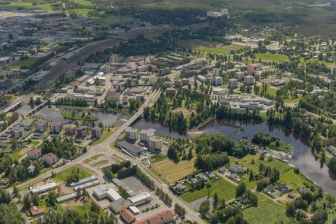
www.ylivieska.fi
二、自然地理
1.地理条件
Ylivieska is located in Northern Ostrobothnia about 130 kilometres (80 mi) south of the city of Oulu. The town is characterized by the Kalajoki River, which runs SE–NW through the town centre. The agricultural and economical area of the Kalajoki river basin is known as Kalajokilaakso. Ylivieska is situated along the Ostrobothnia railway, which leads from Helsinki, the national capital, to Rovaniemi in the north of the country. The railway was opened in 1886 and it has had a significant role in the town's economic development.
www.ylivieska.fi
2. 交通情况
The current travel time between Helsinki and Ylivieska is 4 hours and 46 minutes by train. The fastest train journey between Ylivieska and Kouvola is 5 hours and 44 minutes via Iisalmi and 5 hours and 46 minutes via Tampere. There are direct train and bus connections from Ylivieska to Kokkola, Oulu and Iisalmi. Jyväskylä and Kajaani can also be reached on high-speed buses without changing cars.
The nearest airports in Kruunupyy are located approximately 95 kilometers to the southwest and Oulu approximately 125 kilometers to the northwest. Ylivieska's own airport is used for general and recreational aviation.
www.ylivieska.fi
三、经济发展和规模
Ylivieska is a town of services
about 73% of jobs in the town are in the service sector
the construction and industry sectors account for about 22% of jobs
agriculture and forestry account for a little over 3%.
Ylivieska is known as a trade centre. The wide variety of grocery shops and specialty shops serves the area extensively. Ylivieska is especially known as an attractive car sales centre.
Strong industrial branches include the metal industry, electronic mechanics and the mechanical timber industry. The brick industry has a long history in Ylivieska, and the industry remains significant today.
www.ylivieska.fi
四、产业特点/重点项目
Agriculture and animal husbandry, mainly milking cows, used to be the main sources of livelihood in Ylivieska. In recent decades, the role of agriculture has reduced following the development of industry and services. Currently, Ylivieska is home to about 30 industrial enterprises, some of which are also internationally recognized in their respective niche markets.
Regionally, Ylivieska has become an important place for car buyers. There are several stores and agents selling new and used cars, and purchases average about 6,000 cars per year. Thus, the local car sales entrepreneurs have created the concept of Ylivieska being the "Autolaakso" or "car valley" of the Kalajokilaakso and neighbouring regions.
Car trade has traditionally been the strongest area of trade in Ylivieska. With its ancillary activities, the concentration of car trade known as Ylivieska Autolaakso is a significant employer in the city.
The metal and engineering industries as well as the mechanical wood industry have strong traditions and growth prospects in the domestic and export markets. Bridge beams, large hall structures, power plant pipelines and offshore industrial structures are a significant part of Ylivieska's industrial production. The northernmost hot-dip galvanizing plant in Finland is located in Ylivieska.
The metal industry employs almost 500 people in Ylivieska, the mechanical wood industry about 150 and the IT companies almost 100 people.
The training is strongly displayed in Ylivieska. Teaching at various levels and fields is provided by, among others, the Citizens' College, Centria University of Applied Sciences, the upper secondary school, Raudaskylä Christian College and the Ylivieska Region Vocational College.
www.ylivieska.fi
五、风景名胜,景点( attractions)
1. Savisilta, Suomen toiseksi vanhin betonisilta
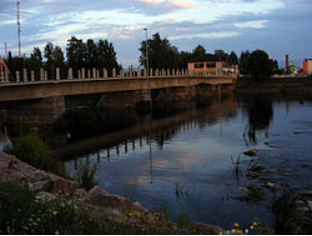
The clay bridge, originally called the Juurikoski Bridge. The clay bridge, originally called the Juurikoski Brid, is a reinforced concrete bridge located in Ylivieska, which crosses the Kalajoki River at Ylivieska between the church and the railway bridge. The bridge was designed by Jalmar Castrén and was built in 1912. At that time, due to the still strange building material, the bridge was called Savisilla. The structure of the bridge is a five-hole girder and cantilever bridge. Bridge dances are sometimes held on the clay bridge in the summer as well. The load on the bridge decreased when the bridge on the current main road 86 was completed in 1959. Traffic was further reduced when the Helala bridge was completed in 1971, and the Savis bridge remained a light traffic bridge. The bridge was restored in 1976. It has been a museum bridge since 1982 and is the second oldest reinforced concrete bridge in Finland. The bridge was repaired in the summer of 2012, and its 100th anniversary was celebrated in September 2012.
www.ylivieska.fi
2. Puuhkalan kotiseutumuseo
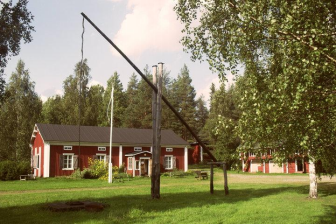
The Puuhkala Museum was founded in 1969 by the Ylivieska Homeland Association, which has collected the majority of the buildings and artefacts in the museum area. Today, the museum is maintained by the city of Ylivieska. Puuhkala is primarily a peasant museum, but there are also artefacts from other fields, e.g. crafts and services. The museum area has a total of 15 buildings and more than 7,000 objects. The artefacts are still being collected. In particular, efforts are being made to increase the milk jug collection.
www.ylivieska.fi
3. Jumbo, vanha entisöity höyryveturi
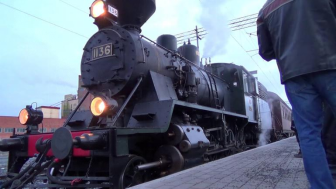
Pikku-Jumbo 1136 also stopped at Lapua station during its 2015 Christmas ride. The journey started from Seinäjoki and continued to Kauhava.
www.ylivieska.fi
六、历史文化
1.历史
The Ylivieska region was a Lappish wilderness area for a long time. In the Middle Ages, the area belonged to the old parish of Salo. The area was not permanently inhabited until the end of the Middle Ages, when settlers from Kalajoki and the villages of Suur-Lohtaja arrived in the area. The settlement of Ylivieska grew quite rapidly. In 1550 there were 13 houses, in the early 17th century there were already 30. In 1690 the population was 622. During the great years of famine and great hatred of the 1690s the population decreased, but after the middle of the 18th century the population began to grow again.
The Ylivieska region initially belonged to the Kalajoki parish. The decision to establish one's own chapel congregation was made as early as 1643, but it was not until ten years later that the parish's own church in Haapaniemi was completed. Ylivieska was separated as an independent parish in 1861, which came into being in 1875. The municipality of Ylivieska was founded in 1867. Municipal life quickly came to life, especially thanks to the writer Peter Päivärinna. Päivärinta, who has been Ylivieska's cantor for 40 years, was the chairman of the municipal assembly in 1869–1872 and 1875–1887. He was founding the parish's first library (1869) and elementary school (1879). However, due to the resistance of the Kalajoki priests and the peasants, their own priest was not obtained until 1862. Ylivieska Church was built in 1786 and repaired to its current appearance according to the drawings of Julius Basilier, the head of the county building office, in 1892. At present, there is no actual church in Ylivieska at all, as in March 2016 the church burned to the ground in arson.
The arable land was greatly increased in the 19th century, but agriculture alone was unable to support a steadily growing population. [8] The difficult situation was triggered by the railway. The municipality's business life began to develop when it got its own railway in 1886. At that time, the Ostrobothnian railway, which was planned to run along the coast, was built inland between Kokkola and Oulu and pulled through Ylivieska. It is said that Peter Päivärinna, a well-known writer and statesman from Ylivieska, had a decisive influence on the early construction of the track and at least its alignment in the 1882 parliament, and thus also greatly influenced the future development of Ylivieska as a whole. [10] Later, a connecting line to Iisalmi was built, this Iisalmi – Ylivieska line was completed in 1925. Ylivieska became an important crossroads for railways, which quickly began to develop into the center of economic and cultural life in the Kalajoki Valley. Improved transport links also attracted industry. As early as the beginning of the 1930s, the idea of transforming the church village of Ylivieska into a township was presented. However, the town of Ylivieska did not become available until 1965, but six years later, in 1971, it received city rights. The reason for this rapid development was the absence of a city center in the southern part of the then Oulu county.
www.ylivieska.fi
2. 文化
seal hunting in the spring off the sea ice in Kalajoki was an important source of livelihood. Tar burning began to become more common in the 17th century and was still an important industry in the early 19th century. Sawmills were built in Hannunkoski and Jylhänkoski as early as the 1760s, and at the end of the century six sage breweries were built in the parish. The Kalajoki Valley became one of the centers of revival in the early 19th century. The leaders of Ostrobothnia's awakening were Niilo Kustaa Malmberg and Ylivieska's chaplain Jonas Lagus. In 1920, the awakened members of the province founded a Christian college in Raudaskylä, which is the largest Christian folk high school and university in Finland. Raudaskylä Christian College gathers about 200 students from all over Finland every year.
Ylivieskatalo Acoustics is a cultural center in the city center. There is a 405-seat concert hall, an exhibition hall, a sound studio, and meeting and video conference rooms. There are many different concerts and events in acoustics, 15 exhibitions a year in the exhibition hall. Acoustics also serves as the Ylivieska is known as a service city due to its public and diverse business services. In recent years, the grocery trade in particular has invested in new retail space in the Ylivieska area. The Kärkkäinen shopping center ISO, which opened at the beginning of 2003 in particular, has boosted traffic throughout the city. K-Citymarket was opened in Ylivieska in 2008 and Prisma in 2011.
Ostrobothnia Underground Association organizes events built around electronic dance music in the Ylivieska region. The association wants to offer people the opportunity to listen to good music, dance and meet like-minded people. One of the most important starting points is to arouse interest among less dedicated people as well. The activity is non-profit because music is the main thing.
www.ylivieska.fi
七、其他信息
The newspaper Kalajokilaakso and the free distribution magazine Vieskan Viikko are published three times a week in Ylivieska. Ylivieska hosts the annual Sun Pampas City Festival in June and the Ylivieska Bull Festival on the second weekend of August.
八、联系方式
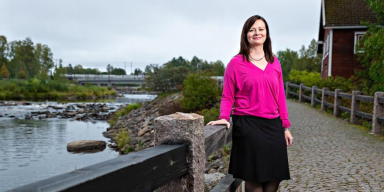
Mayor of Ylivieska: Maria Sorvisto
Website: http://www.ylivieska.fi/
Address: Puhelinvaihde 08-42941, Avoinna klo 9-15/ PL 70, 84101 Ylivieska
Email: kirjaamo@ylivieska.fi/ etunimi.sukunimi@ylivieska.fi
Facebook: @Ykaupunki
Phone number: +358 8 42941
